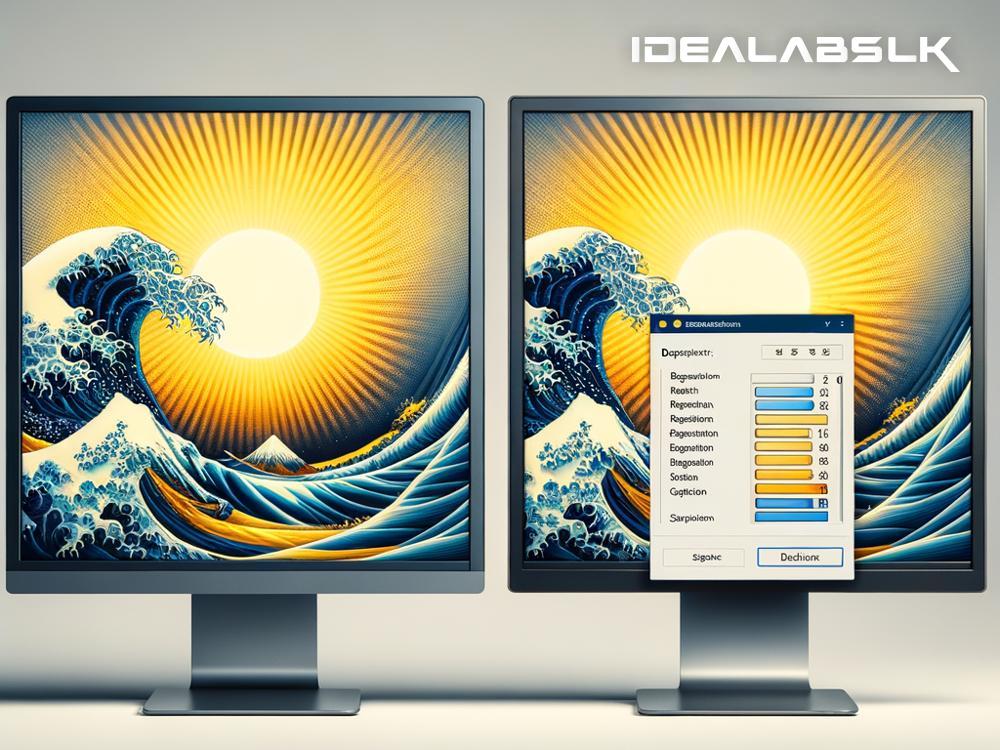Troubleshooting: Can't Adjust Resolution on Secondary Monitor? Here's What to Do!
So you've finally decided to give your productivity a boost by adding a secondary monitor to your setup. Sweet move! But then, you hit a snag: for some reason, you can't adjust the resolution on your new screen. It's either too big, making everything look pixelated, or too small, forcing you to squint. Frustrating, right? Don't sweat it! We're here to walk you through some troubleshooting steps to get that resolution right where you want it. Keep reading for some down-to-earth advice on fixing this issue.
1. Check the Connections
First things first, let's not overlook the simplest things. Ensure your monitor is correctly connected to your computer. Cables can be sneaky little things - sometimes they seem plugged in when they're actually just hanging by a thread. Double-check the HDMI, DVI, VGA, or DisplayPort cable. If you're using an adapter or a dock, make sure that's properly connected, too.
2. Update or Reinstall Your Graphics Drivers
Your computer's graphics drivers are like a translator between your system and the monitor. If this "translator" isn't speaking the right language (i.e., is outdated or corrupted), you're going to have translation errors. Here's what you can do:
-
Update: Go to your graphics card manufacturer's website (NVIDIA, AMD, Intel) and find the latest drivers for your model. Download and install them, following the instructions closely.
-
Reinstall: Sometimes, a fresh start is what you need. In your computer's Device Manager, find your graphics card under "Display adapters," right-click it, and choose "Uninstall device." Then, restart your computer. Windows should automatically reinstall the driver for you. If not, go back to the manufacturer’s website and download the drivers manually.
3. Adjust Display Settings Through Your Operating System
Both Windows and macOS have built-in settings for managing multiple displays.
-
Windows: Right-click on your desktop and select "Display settings." Scroll down to "Multiple displays," and make sure it recognizes both screens. Click on the secondary monitor and try adjusting the resolution from there.
-
macOS: Open System Preferences > Displays. Hold the Option key, and you'll see a "Detect Displays" button appear — click it. This can help your Mac recognize the second monitor better. Then, select the "Display" tab to adjust the resolution.
4. Use Your Monitor's Built-in Menu
Many monitors have their own menu system that you can navigate using buttons on the monitor itself. Although these menus might seem like a maze at first, they're worth exploring. Look for any settings related to "Display" or "Picture" and adjust them according to your needs. Not all monitors allow you to change the resolution this way, but it's worth a check.
5. The Cable or Adapter Might Be the Culprit
Sometimes, the issue isn't with your computer or the monitor — it's what's in between. Not all cables or adapters support all resolutions. For example, older VGA cables might not handle high resolutions well. Try swapping out your cable or adapter for a different one to see if that solves the problem.
6. Check for Hardware Limitations
It's also possible that your secondary monitor or your graphics card has inherent limitations. Maybe the monitor can't handle the resolution you're trying to set, or the graphics card can't support two high-resolution displays at once. Check the specifications of both to make sure they match up with what you're trying to achieve.
7. When All Else Fails: Consider Third-party Software
There are several third-party applications out there that can help manage multiple monitors and possibly circumvent resolution issues. Tools like DisplayFusion (for Windows) or BetterSnapTool (for macOS) can offer more control over your monitors than the built-in settings might.
By walking through these steps, you should be able to untangle most resolution-related conundrums with your secondary monitor. Remember, take it step by step, and don't be afraid to seek out more specific advice or professional help if your situation is particularly stubborn. Happy adjusting, and enjoy your newly crisp and clear secondary display!

